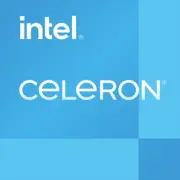Intel Celeron 867

Intel Celeron 867: A Humble Workhorse for Basic Tasks
Overview of an outdated yet relevant processor for budget scenarios
Architecture and Manufacturing Process: The Sandy Bridge Legacy
The Intel Celeron 867, released in 2012, belongs to the Sandy Bridge architecture (2nd generation Core). Despite its age, it remains a testament to the balance of cost and energy efficiency.
- Cores and Threads: 2 cores, 2 threads. The lack of Hyper-Threading limits multitasking.
- Clock Speed: Base clock at 1.3 GHz. Turbo mode is not supported, which is typical for budget Celeron.
- Graphics: Integrated Intel HD Graphics GPU (based on Sandy Bridge, 6 EU). Frequency ranges from 350 to 1000 MHz. Suitable for video decoding (1080p) and simple 2D games.
- Manufacturing Process: 32 nm. By 2025 standards, this is archaic, but at the time, it helped reduce power consumption.
The Sandy Bridge architecture brought improvements in IPC (instructions per cycle) by 10-15% compared to the previous generation, but the Celeron 867, due to its limited cache (2 MB) and low frequency, significantly lagged behind the Core i3/i5.
TDP and Power Consumption: Savings over Power
The processor's TDP is 17 watts. This was standard for mobile CPUs of its time.
- Heat Generation: Minimal, allowing for passive cooling in thin laptops.
- Energy Efficiency: Even under peak load, consumption does not exceed 20 watts, extending battery life.
However, the low TDP is achieved at the cost of performance: the CPU is not designed for prolonged loads, such as video rendering.
Performance: Modest Capabilities
Office Tasks:
- Working with documents (Word, Excel), browsing with 5-10 tabs is feasible but accompanied by lags when switching between applications.
- Running Windows 10/11 is possible but using lightweight distributions (e.g., Windows 10 LTSC) is recommended.
Multimedia:
- Playing Full HD video (YouTube, local files) - no issues.
- Photo editing in Lightroom is extremely slow; online editors are preferable.
Gaming:
- Old games (Half-Life 2, Minecraft on minimum settings) reach 20-30 FPS.
- Modern projects – will not run.
Turbo Mode: Absent. The processor operates at a fixed frequency, which is stable but does not provide gains in "heavy" scenarios.
Use Cases: Who is the Celeron 867 Suitable for in 2025?
- Students: For lectures, writing papers, Zoom conferences.
- Seniors: Basic surfing, email, photo viewing.
- Office Workers: Text editing, spreadsheets, PDF handling.
- Backup Laptop: For trips where the risk of loss/breakage is high.
Not Suitable for:
- Video editing, 3D modeling.
- Modern gaming, streaming.
- Working with "heavy" IDEs (e.g., Android Studio).
Battery Life: Up to 6 Hours?
In laptops with a 40-50 Wh battery, the operational time reaches 5-6 hours under:
- 50% screen brightness.
- Browsing or working with office applications.
- Enabled OS power-saving mode.
Power-Saving Technologies:
- Intel SpeedStep: Dynamic frequency adjustment depending on load.
- C-States: Powering down unused CPU components during idle.
However, battery wear in devices from 2012-2015 by 2025 reduces autonomy to 2-3 hours.
Comparison with Competitors: Who Was Stronger?
AMD E-450 (2011):
- 2 cores, 1.65 GHz, Radeon HD 6320 graphics.
- Pros: Better graphics, DirectX 11 support.
- Cons: Higher TDP (18 W), poorer driver optimization.
Intel Pentium 987 (Sandy Bridge):
- 2 cores, 1.5 GHz, 2 MB cache.
- 10-15% faster than Celeron 867, but more expensive.
Apple A7 (2013):
- ARM architecture, 64-bit. Even in 2025, older iPads with A7 remain relevant for basic tasks due to iOS optimizations.
Pros and Cons: Is It Worth Buying?
Pros:
- Low price (laptops with this CPU cost $250-$300 from 2012-2014).
- Repairability: Replacing the SSD or adding RAM (up to 8-16 GB DDR3) can prolong the device's life.
- Quiet operation: Some models lack fans.
Cons:
- Morally outdated: Does not support Windows 11 (without modifications).
- Limited multitasking: "Lag" when running a browser and antivirus simultaneously.
- No support for modern standards: USB 3.0, Wi-Fi 6.
Recommendations for Choosing a Laptop
Configuration:
- RAM: Minimum 4 GB, preferably 8 GB.
- Storage: An SSD is essential (even SATA) instead of an HDD.
- Screen: Matte finish for working in bright light.
Form Factor:
- Ultrabooks: Dell Latitude E6230, Lenovo ThinkPad X230 – lightweight, durable.
- Budget Laptops: HP ProBook 4530s – repairable.
Check Before Purchase:
- Battery test (BatteryInfoView software).
- Heat check (AIDA64 Stress Test).
- Inspect ports (often break due to age).
Final Conclusion: A Niche Solution
The Intel Celeron 867 in 2025 is suitable for those who need:
- An ultra-budget device for simple tasks.
- A temporary solution until purchasing a modern laptop.
- A device for children/seniors with minimal requirements.
Key Benefits:
- Almost zero cost (on the second-hand market — $50-$100 for a laptop).
- Sufficient performance for "digital minimalism".
However, for a comfortable experience in 2025, it’s better to consider models based on Intel Celeron N4500 (Gemini Lake) or AMD Athlon Silver 3050U — they support modern OS and standards while remaining in the budget segment ($300-$400).
In summary: The Celeron 867 is an example of a "survivor" processor that reminds us that technology ages but can still be useful in the hands of unassuming users.
Basic
CPU Specifications
Memory Specifications
GPU Specifications
Miscellaneous
Benchmarks
Compared to Other CPU
Share in social media
Or Link To Us
<a href="https://cputronic.com/index.php/cpu/intel-celeron-867" target="_blank">Intel Celeron 867</a>